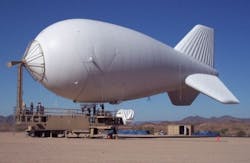Military users want more processing capability so they can stream live video in on the displays and display FLIR imaging, and have processing capability to meet future requirements, says Bill Ruhl, regional marketing manager at Astronautics Corporation of America in Milwaukee.
“One thing military users want in their avionics displays is night vision technology,” Ruhl says. “All Astronautics displays have a LED backlighting system that is capable of supporting night vision technology.”
Other trends include the continued integration of processing elements and features that allow displays formats with less overall depth and the adoption of standard digital protocols for graphics rendering and media support, Ekman says.
“The continued integration of CPU and GPU devices, along with efficient LED backlighting is allowing for display formats with less depth,” Ekman says. “This is allowing displays to be placed in cockpit positions that could not be considered in the past. Also, support for standard, more digital display and video protocols further consolidate circuitry and enables re-application of design elements.”
Many of these cockpit positions were difficult due to size constraints of many display formats.
“When retrofitting an avionics display system most military users want a low-cost upgrade that can slide right into existing configurations without extensive costs,” Ruhl says. Some cockpits are very tight when it comes to available space and squeezing a display in there can be challenging, he adds.
“Retrofits continue to be active as platforms deal with obsolescence issues and smaller, more affordable upgrades,” Ekman says.
Each military display configuration Astronautics works on is unique in terms of the display size and number of displays they want, Ruhl says. Some users want only two displays on a helicopter, leaving the original engine instruments in place, while others want three new displays with one showing the engine information, he adds.
“We have done the C-130 Avionics Modernization Program (AMP) for the Brazilian air force, using five 6-by-8-inch displays,” Ruhl says. Another AMP program for a C-130 used six displays and electronic flight bag (EFB) capability that enables the customer to display other data, he adds.
Astronautics Smart Displays have a low silhouette electronics package that enables one to accommodate high instrument panel mounting, says Eyton Zelazo, business development manager at Astronautics. The devices enable integration of most aircraft, systems and navigation applications and offer integration of communication navigation surveillance/air traffic management (CNS/ATM) related systems and functions, he adds.
CNS/ATM is “driving the demand for improved displays by making the cockpit a data rich environment,” Champagne says. “In this context, the retrofit market is effectively driving the demand for smarter avionics displays.
“Displays are acquiring increasing degrees of smartness with embedded processing power, increased digital data storage capacity and faster transfer rates with other avionics equipment,” Champagne continues. “The longer term trend for avionics display upgrades is for software standards allowing new avionics functionality to be added easily and at very low cost, i.e., the capability to download software applications.”
Company listing
Aspen Avionics
Albuquerque, N.M.
www.aspenavionics.com
Astronautics
Milwaukee
www.astronautics.com
Avidyne Corp.
Lincoln, Mass.
www.avidyne.com
BAE Systems
Farnborough, England
www.baesystems.com
Barco
Rancho Cordova, Calif.
www.barco.com
Digital Systems Engineering
Scottsdale, Ariz.
www.digitalsys.com
Dynon Avionics
Woodinville, Wash.
www.dynonavionics.com
Elbit Systems
Haifa, Israel
www.elbitsystems.com
Esterline CMC Electronics
Ville Saint-Laurent, Quebec
www.cmcelectronics.ca
Flight Display Systems
Alpharetta Ga.
www.flightdisplay.com
Garmin
Olathe, Kan.
www.garmin.com
GE Aviation
Cincinnati
www.geae.com
Honeywell Aerospace
Phoenix
www.honeywell.com
Innovative Solutions & Support (IS&S)
Exton, Pa.
www.innovative-ss.com
L-3 Display Systems
Alpharetta, Ga.
http://www.l-3com.com/Displays/
Meggitt Avionics
FareHam, England
http://www.meggitt-avionics.co.uk/
Rockwell Collins
Cedar Rapids, Iowa
www.rockwellcollins.com
Palomar Display Products
Carlsbad, Calif.
www.palomardisplays.com
Parvus
Salt Lake City
www.parvus.com
Planar
Beaverton, Ore.
www.planar.com
Sagem Avionics
Grand Prairie, Texas
www.sagemavionics.com
Sandel Avionics
Vista, Calif.
www.sandel.com
Terma A/S
Lystrup, Denmark
www.terma.com
Thales
Neuilly-sur-Seine, France
www.thalesgroup.com
Tulip Development Laboratory
Quakertown, Pa.
www.tuliplabs.com
Universal Avionics
Tucson, Ariz.
www.uasc.com



